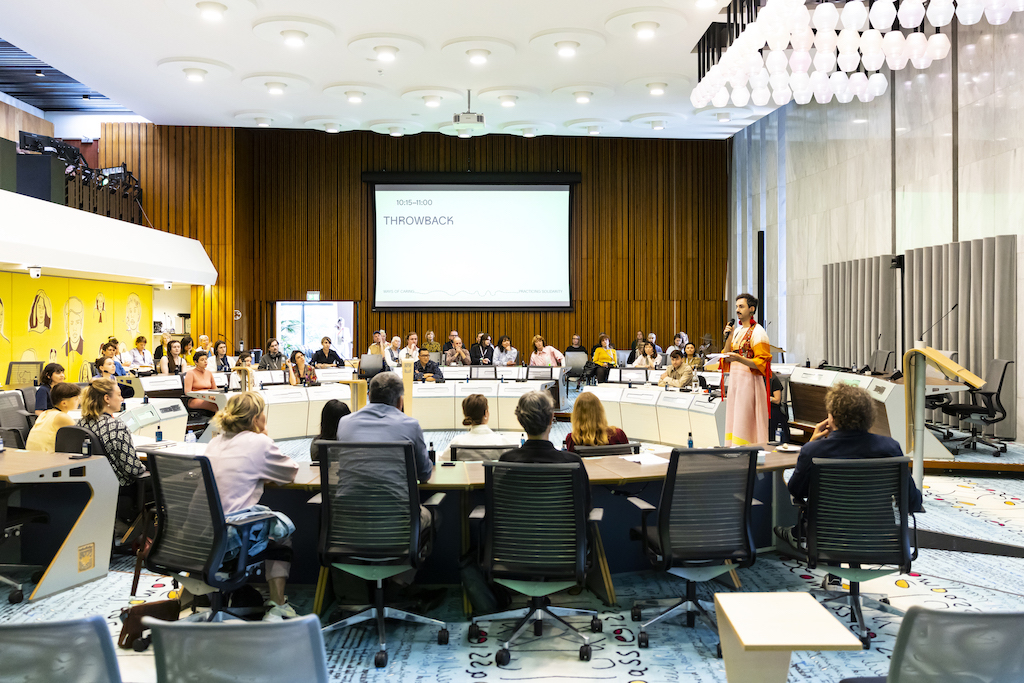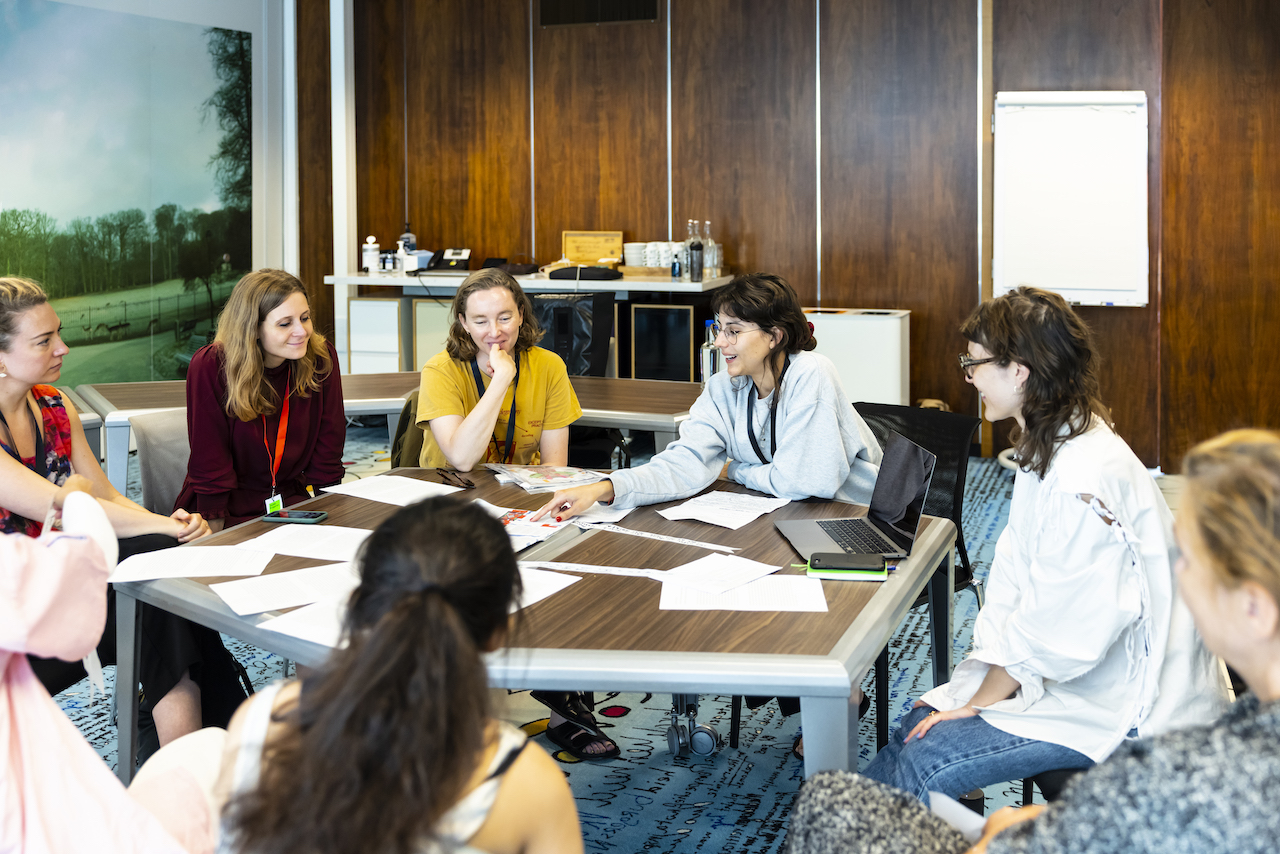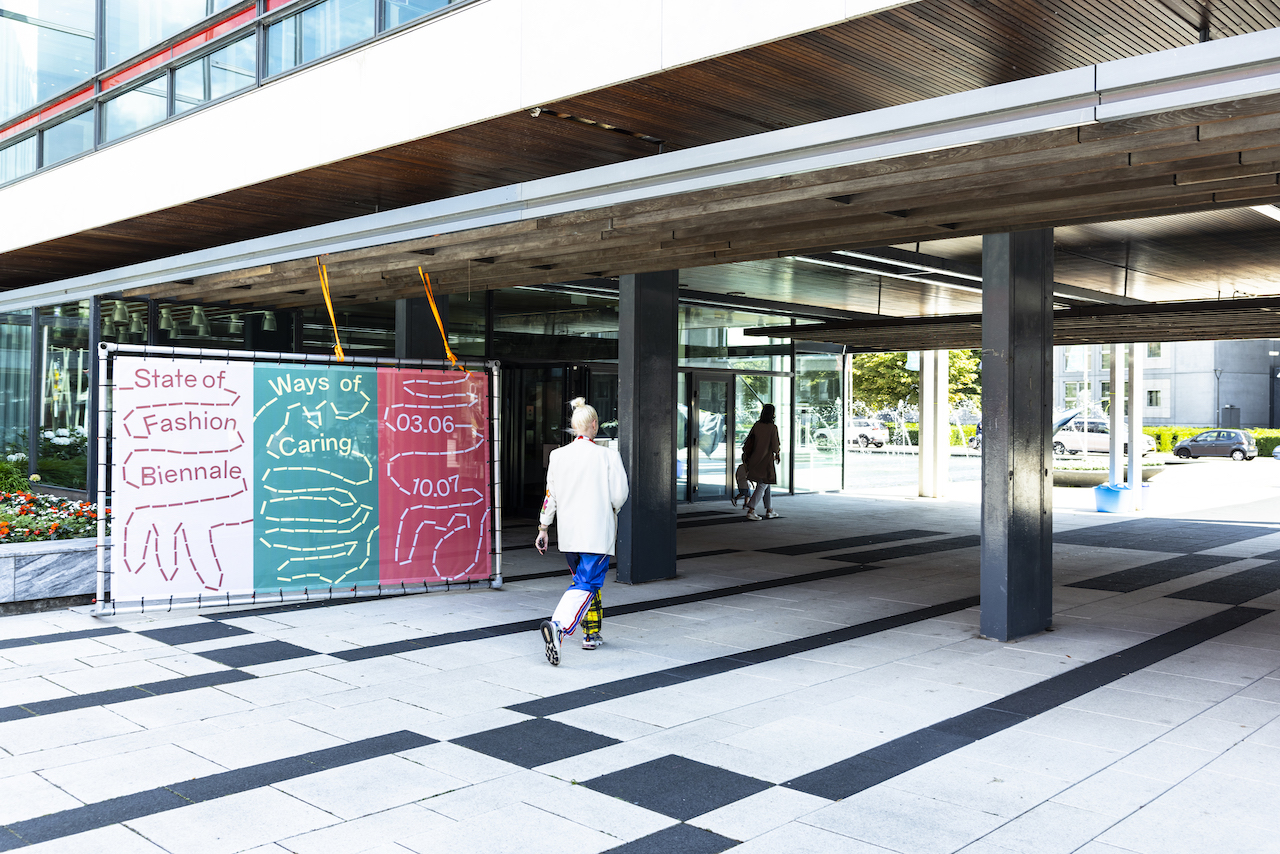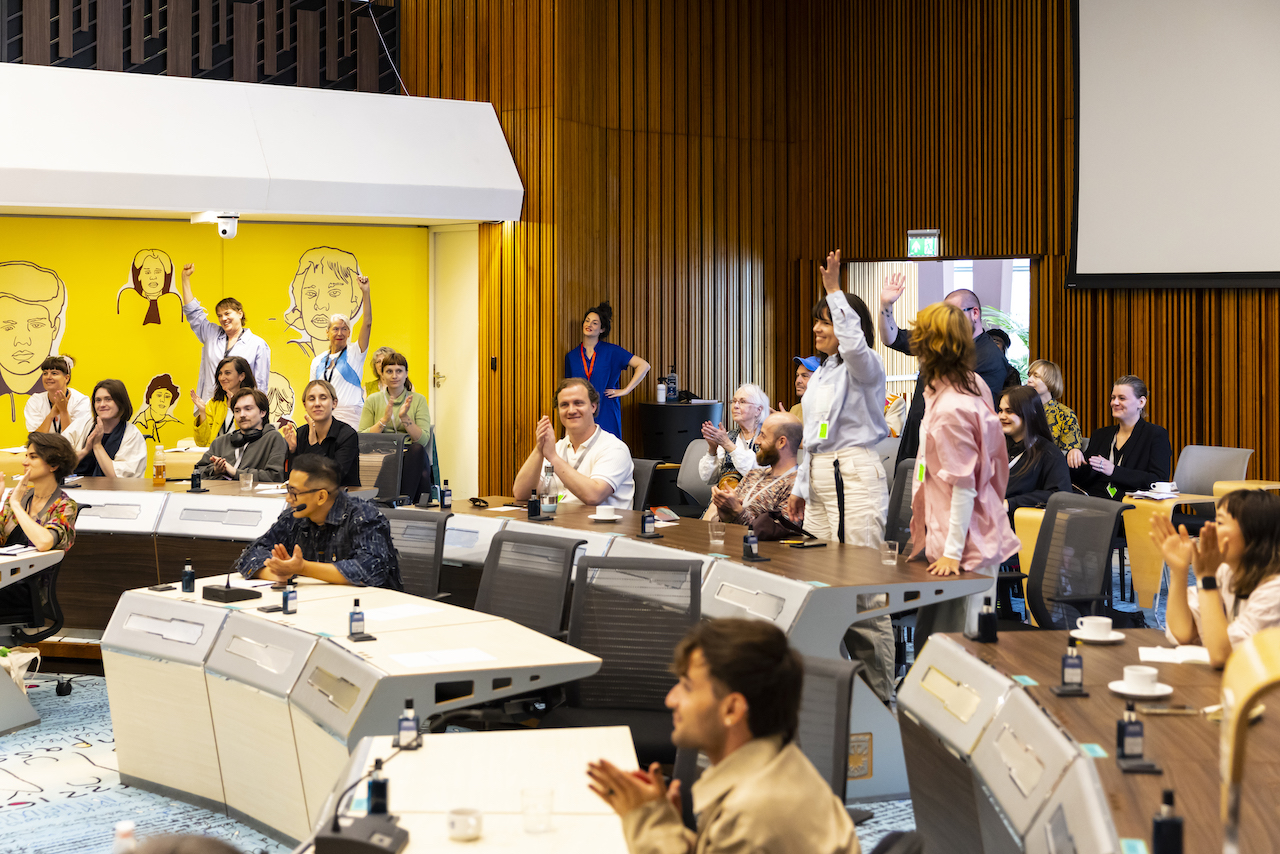
During the Ways of Caring online conference, I was able to attend a variety of workshops and programs by fashion practitioners and researchers from around the globe. As a participant, it was interesting to embody my added role as an audience member and consequently, a listener. It was brought to my attention during one of the panels on how imperative the act of listening is, especially in decolonial practices of fashion. The act of listening was touched upon a few times during the program in specific regard to assuming decolonial spaces and how to decenter ways of working collectively when it comes to fashion making. This form of decentralisation is something I strive for in my research for Studio Palha, an equity-based community design practice centred around gender and craftsmanship in Mozambique. Working together with the female artisanal communities of rural Mozambique in which we foster exchanges with designers, the communication becomes challenging because of the diversity in languages and cultural differentiations. When active listening is taking place, we come to embody a sensorial experience in our exchanges, which heighten the somatic aspect to co-creating and crafting as a collective. Our senses come alive and allow us to connect not only with one another, but with what is around us in the physical space. The radical practice and active act of listening in how we communicate across various communities can allow us to create new bridges and allow for new knowledge production. The word practicing suggests we allow ourselves to experiment, to explore with room for failure, and with the intention to grow and evolve. Evolution herein, can be understood as one of the pillars of deep ecological practices of Indigenous people. Added to that, the reverence for nature, for human and non-human entities that make part of these complex ecosystems, allow us to understand these practices better. This was beautifully illustrated in the film, Quanto Vale Uma Vida?1, that was shown during Ways of Caring, in which the relationship with the Indigenous communities and land territories was elaborated on. Through the moving images, we witness the community of the Indigenous people of Tapeba from Ceará, Brazil, who have an interdependence with their land and nature, sustained by their ancestral lineage.
“We work in preserving the life of human and non-human forms.” — João Félix de Sousa,
Agricultural familiar from the Riacho do Meio community of village of Tepeba, Brazil.
I draw parallels with my practice in Mozambique, in which Kincentric Ecology2 is central to the way of living. The Indigenous communities of the Global South treat the natural world as kin, and therefore practice taking care of the land as though their lives depend on it, because their lives often do depend on it. By looking at the ecosystems of Indigenous life in this way, I have come to understand the magnitude of healing as a pillar of deep ecology. Not only are these sacred communities experts of planetary health, their stories invite us to become re-enchanted with nature and all its wonders. I ask myself: could this possibly be the pathway to foster a deeper and more intrinsic care for other living and non-living beings? One that would allow us to move towards a fashion industry that is impact-driven, uplifting and transformational.
This draws me to pioneering feminist scholar Bell Hooks3 and her writings on the marginal discourse. When pondering on marginality in regards to listening, and in specific, those who are not being listened to, we must ask ourselves who is doing all the talking. This leads us to answer who is at the centre and who finds themselves at the margins (the outside). Hooks writes about the painful position of marginality, as it serves as a reminder of those who are oppressed and the spaces they can hardly enter or simply, never get to arrive in.
“To be at the Margin, is to be part of the whole but outside the main body” — Bell Hooks (1989).

This brings me to question the discourses that have been normalised far too often. So, who are we listening to? If I follow this trail of thought, listening in this particular context becomes an act of authorisation towards whoever is speaking. Hooks further delves into the idea that those who are listened to are those who belong. Belonging becomes an emotionally weighted word in the context of colonial fashion practices that are still taking place. Those who are not listened to are those who do not belong. And yet, how difficult it must be for those at the margins to speak, especially if they find themselves in regressive circumstances such as a war or a crisis. That is why we should not romanticise the postcolonial discourse because to be aware of the absence of marginalised voices means there is a lack of space for these voices. Due to the inequality and the absence of the Indigenous voices in the fashion industry, the access to the resources necessary to insert these voices are therefore also absent.In order to listen to the unheard voices of our planet, we must make space for the development of a new discourse, with a new language. Reflecting on the Tapeba people, dr. Lilyan Berlim5 enunciates that the academia utilises complex and technological language that makes it difficult to understand. Hooks also references this, in which she states, "we are wedded in language, have our being in words. Language is also a place of struggle” (1989). Berlim argues that if we look at values, we come much closer to understanding what is just, what is clean and what is good, suggesting it allows us to better make decisions on how to act when discussing sustainability in relation to the Global South in this particular context. As Hooks herself writes, ‘the margin is a location that nourishes our capacity to resist oppression, to transform, and to imagine alternative new worlds and new discourses’. Imagine what this radical space of creativity could allow us to learn from, and how it could unfold new ways of knowing and making.
https://www.stateoffashion.org

1 Translation from Portuguese: How Much Is a Life Worth?: Indigenous and rural communities demand reparation of ecological and social debts. A documentary (September 2021) that draws a parallel between the problems experienced in Aldeia Lagoa dos Tapeba, in Caucaia, in the Metropolitan Region of Fortaleza, and in the rural community Riacho do Meio , in Choró, in the Central Sertão of Ceará.
2 Kincentric ecology is further delved upon in Enrique Salmon’s reflections on the human interactions with their complex ecosystems and how it relates to the preservation and enhancement of these very ecosystems. Salmón, E. (2000). Kincentric Ecology: Indigenous Perceptions of the Human-Nature Relationship. Ecological Applications, 10(5), 1327–1332. https://doi.org/10.2307/2641288.
3 Hooks, B. (1989). Choosing the Margin as a Space for Radical Openness. Framework: The Journal of Cinema and Media, 36, 15–23. http://www.jstor.org/stable/44111660
4 Kilombia, G. (2016) Plantation Memories: Episodes of Everyday Racism. Münster: Unrast.
5 Lilyan Berlim holds a PhD in Social Sciences is a researcher on Climate Change and sustainable practices. She is the author of the book Fashion and Sustainability, a Necessary Reflection (2012).
photography by Eva Broekema
